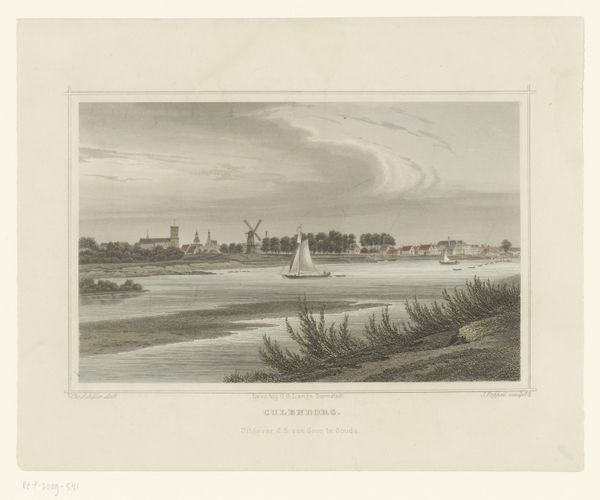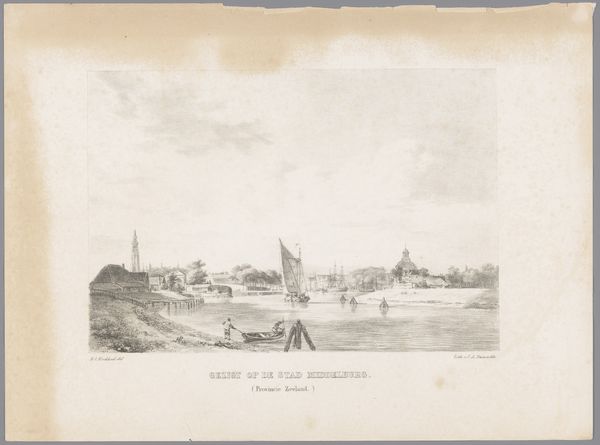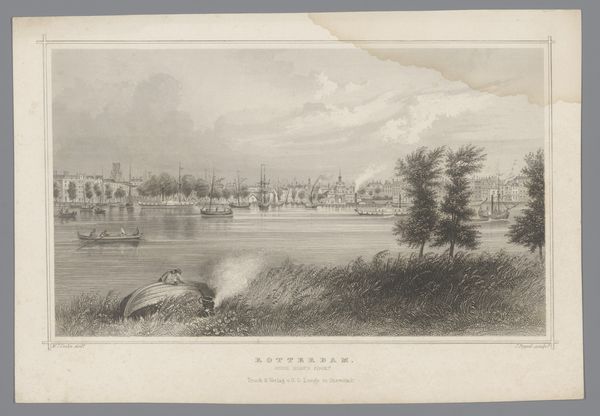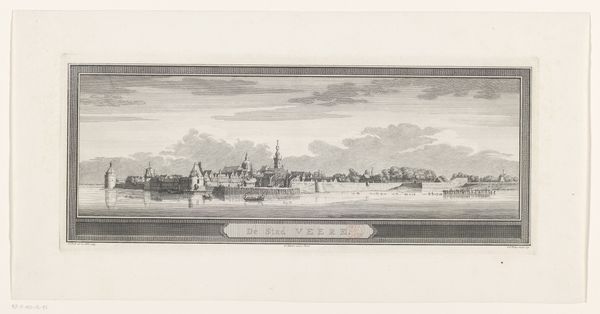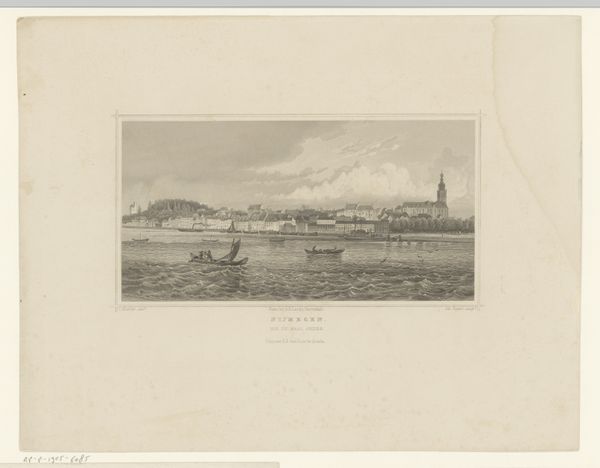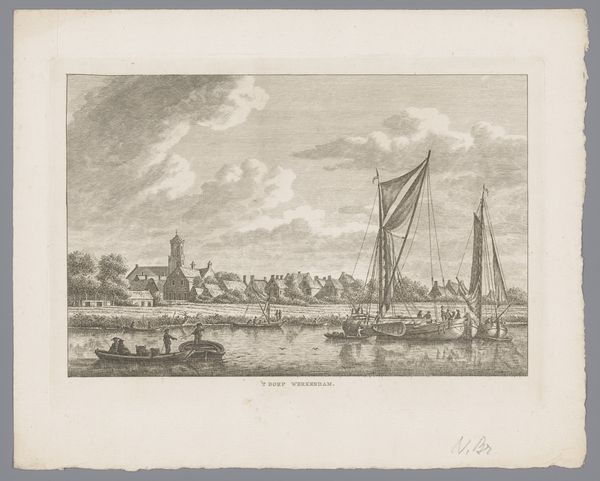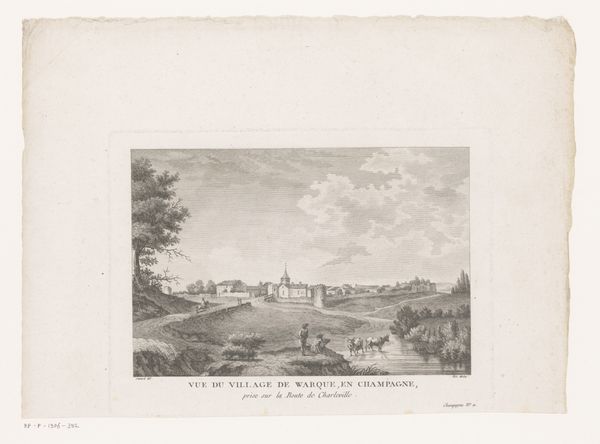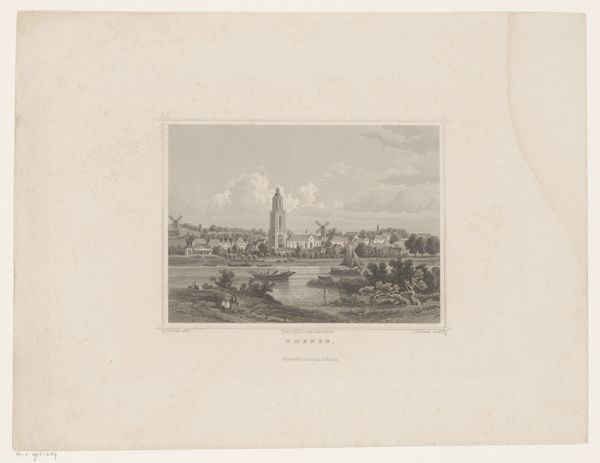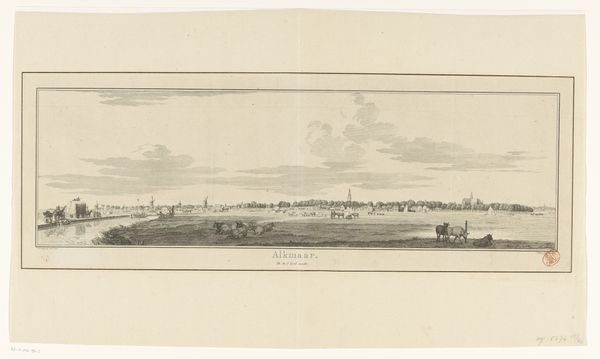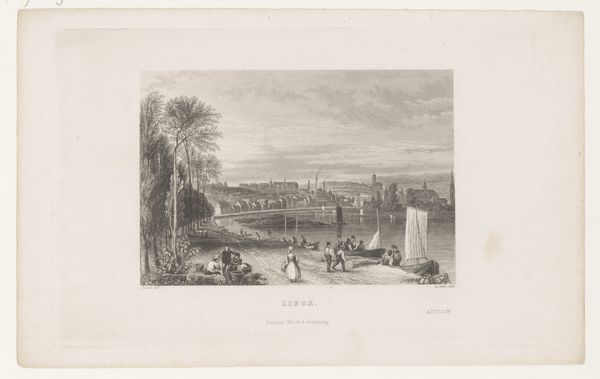
print, engraving
#
dutch-golden-age
# print
#
landscape
#
river
#
archive photography
#
historical photography
#
cityscape
#
engraving
#
realism
Dimensions: height 173 mm, width 255 mm
Copyright: Rijks Museum: Open Domain
Curator: This engraving, "Gezicht op Schoonhoven," dating back to 1858, offers us a glimpse of the Dutch town of Schoonhoven as captured by Johann Gabriel Friedrich Poppel. The work is held at the Rijksmuseum. Editor: It's a very still, peaceful scene. The muted tones contribute to a sense of serenity; the horizontal composition, divided almost equally between land, water, and sky, reinforces the stillness. Curator: Indeed. Poppel masterfully uses line and texture to create depth. Observe how the intricate detailing of the buildings and windmill in the distance gradually softens towards the foreground, drawing the viewer's eye across the landscape. Editor: And consider the role of prints such as this in shaping national identity. Cityscapes like this provided visual records of Dutch prosperity and order during a time of significant socio-political shifts. It romanticizes the local by elevating Schoonhoven to an idyllic subject. Curator: The visual language here certainly speaks to ideals of order and clarity. The placement of architectural forms—the church spire acting as a vertical anchor—demonstrates careful compositional thought, establishing a balanced structure that adheres to classical landscape traditions. Editor: That's true. The architectural features aren't just aesthetic; they embody the established social order: the church, the civic buildings, all testifying to the structure of the town's identity. Also the windmill signifies that it was once an economic power for the rural, even though steamboats dominate now. Curator: We can read how Poppel utilized tonal gradations to generate spatial depth while creating balance within his overall composition, it’s an accomplishment! Editor: Absolutely! Examining the engraving provides us a point to rethink 19th-century provincial identity, seeing art as not merely decorative but fundamental to shaping communal pride and perception.
Comments
No comments
Be the first to comment and join the conversation on the ultimate creative platform.
